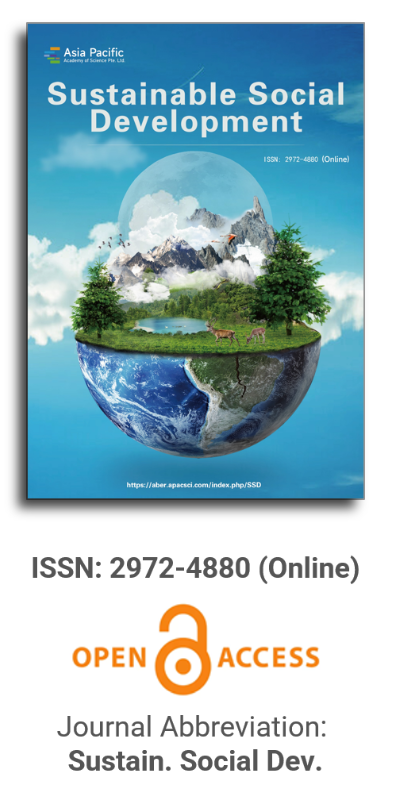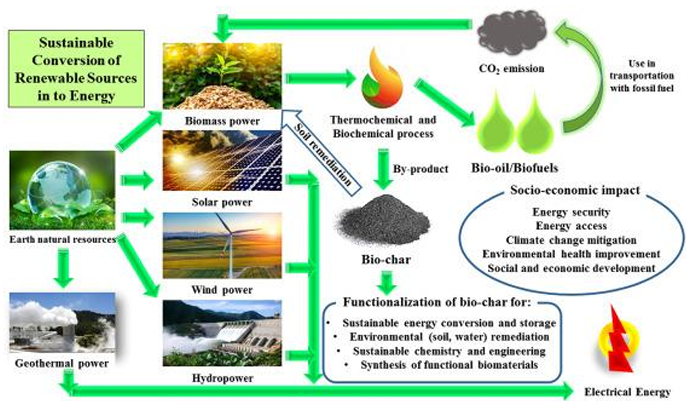
Asia Pacific Academy of Science Pte. Ltd. (APACSCI) specializes in international journal publishing. APACSCI adopts the open access publishing model and provides an important communication bridge for academic groups whose interest fields include engineering, technology, medicine, computer, mathematics, agriculture and forestry, and environment.

Crowdfunding in the Portuguese social sector: User profile
Vol 1, Issue 2, 2023
Download PDF
Abstract
CF is an emerging financing source that aims to take advantage of information technology to raise money for new business projects. There are different models of CF that can be used in both the for-profit and social sectors. This article aims to study the use of crowdfunding in the Portuguese social sector. For this purpose, the objectives of the study are threefold: (i) to analyze the extent to which social organizations in Portugal have used CF; (ii) to analyze whether or not the use of CF is conditioned by the profile of these organizations; (iii) to assess whether the use of CF as a financial tool influences the capacity of the social organization to acquire other types of resources. The study uses a quantitative approach based on an online survey of 313 social organizations in Portugal. The results show that CF is not widely used by social organizations, although some characteristics seem to be associated with its use, namely age, geographical scope, size, and presence on social media. In addition, a positive relationship is found between the use of CF and the ability of social organizations to acquire resources and information.
Keywords
References
- Bernardino S, Santos JF. Management of financial resources and performance: Dependence or sustainability of social organizations in Portugal? (Portuguese). European Journal of Applied Business and Management 2021; 7(1): 23–41. doi: 10.58869/EJABM
- Belleflamme P, Lambert T, Schwienbacher A. Individual crowdfunding practices. Venture Capital 2013; 15(4): 313–333. doi: 10.1080/13691066.2013.785151
- Belleflamme P, Lambert T, Schwienbacher A. Crowdfunding: tapping the right crowd. Journal of Business Venturing 2014; 29(5): 585–609. doi: 10.1016/j.jbusvent.2013.07.003
- Moritz A, Block JH. Crowdfunding: A literature review and research directions. In: Brüntje D, Gajda O (editors). Crowdfunding in Europe: State of the Art in Theory and Practice. Springer; 2016. doi: 10.1007/978-3-319-18017-5_3
- Agrawal AK, Catalini C, Goldfarb A. The geography of crowdfunding. Available online: https://www.nber.org/system/files/working_papers/w16820/w16820.pdf (accessed on 29 October 2023).
- Hemer J. A snapshot on crowdfunding. Available online: https://www.econstor.eu/handle/10419/52302 (accessed on 29 October 2023).
- Liang X, Hu X, Jiang J. Research on the effects of information description on crowdfunding success within a sustainable economy—The perspective of information communication. Sustainability 2020; 12(2): 650. doi: 10.3390/su12020650
- Kuti M, Madarász G. Crowdfunding. Public Finance Quarterly 2014; 59(3): 355–366.
- Stemler AR. The JOBS Act and crowdfunding: Harnessing the power—and money—of the masses. Business Horizons 2013; 56(3): 271–275. doi: 10.1016/j.bushor.2013.01.007
- European Union. Crowdfunding explained: A guide for small and medium enterprises on crowdfunding and how to use it. Available online: http://op.europa.eu/en/publication-detail/-/publication/d5e626ba-d7c8-11e6-ad7c-01aa75ed71a1/language-en/format-PDF (accessed on 29 October 2023).
- Allison T, McKenny A, Short J. The effect of entrepreneurial rhetoric on microlending investment: An examination of the warm-glow effect. Journal of Business Venturing 2013; 28(6): 690–707. doi: 10.1016/j.jbusvent.2013.01.003
- Chemin M, De Laat J. Can warm glow alleviate credit market failures? Evidence from online peer-to-peer lenders. Economic Development and Cultural Change 2013; 61(4): 825–858. doi: 10.1086/670374
- Dushnitsky G, Guerini M, Piva E, Rossi-Lamastra C. Crowdfunding in Europe: Determinants of platform creation across countries. California Management Review 2016; 58(2): 44–71. doi: 10.1525/cmr.2016.58.2.
- Zvilichovsky, D, Inbar, Y, Barzilay, O. Playing both sides of the market: Success and reciprocity on crowdfunding platforms. Available online: https://deliverypdf.ssrn.com/delivery.php?ID=790086090127100095021069120103121117016083053010057028103075004126104104078101004074010017029060104024054108109074103083004104005023049082020123110074080099118099031019062051090026067106088107112089006111007122010120084124111116091065103099081017125064&EXT=pdf&INDEX=TRUE (accessed on 29 October 2023).
- De Buysere K, Gajda O, Kleverlaan R, Marom D. A Framework for European crowdfunding. Available online: https://eurocrowd.org/wp-content/uploads/2021/12/A-Framework-for-European-Crowdfunding.pdf (accessed on 29 October 2023).
- Bernardino S, Freitas Santos J. An exploratory study on knowledge, benefits and barriers perceived by young potential entrepreneurs. Journal of Risk and Financial Management 2020 13(4): 81. doi: 10.3390/jrfm13040081.
- André K, Bureau S, Gautier A, Rubel O. Beyond the opposition between altruism and self-interest: Reciprocal giving in reward-based crowdfunding. Journal of Business Ethics 2017; 146: 313–332. doi: 10.1007/s10551-017-3652-x
- Austin J, Stevenson H, Wei-Skillern J. Social and commercial entrepreneurship: Same, different, or both?. Entrepreneurship Theory and Practice 2016; 30(1): 1–22. doi: 10.1111/j.1540-6520.2006.00107.x
- Bauer C, Guzmán C, Santos F. Social capital as a distinctive feature of social economy firms. International Entrepreneurship and Management Journal 2012; 8(4): 437–448. doi: 10.1007/s11365-012-0230-7
- Pfeffer J, Salancik G. The External Control of Organizations: A Resource Dependence Perspective. Harper & Row; 1978.
- Chikoto-Schultz GL, Sakolvittayanon N. Revenue diversification, growth, and stability. In: Garcia-Rodriguez I, Romero-Merino ME (editors). Financing Nonprofit Organizations, 1st ed. Routledge; 2020. pp. 99–113. doi: 10.4324/9780429265419-10
- Dionisio M. The evolution of social entrepreneurship research: A bibliometric analysis. Social Enterprise Journal 2019; 15(1): 22–45. doi: 10.1108/SEJ-05-2018-0042
- Stuart TE, Sorenson O. Social networks and entrepreneurship. In: Alvarez SA, Agarwal R, Sorensen O (editors). Handbook of Entrepreneurship Research: Disciplinary Perspectives. Springer; 2005. pp. 233–252. doi: 10.1007/0-387-23622-8_11
- Gustin CM, Stank TP, Daugherty PJ. Computerization supporting integration. International Journal of Physical Distribution & Logistics Management 1994; 24(1): 11–16. doi: 10.1108/09600039410055972
- Phillips JT. What’s in the data warehouse?. ARMA Records Management Quartely 1997; 31(2): 54–56.
- Myers P, Nelson T. Considering social capital in the context of social entrepreneurship. In: Fayolle A, Matlay H (editors). Handbook of Research on Social Entrepreneurship. Edward Elgar; 2010. pp. 271–285. doi: 10.4337/9781849804684.00021
- Burt RS. The social structure of competition. In: Nohria N, Eccles RG (editors). Networks and Organizations: Structure, Form, and Action. Harvard Business School Press; 1992. pp. 57–91.
- Woolcock M, Narayan D. Social capital: Implications for development theory, research and policy. The World Bank Research Observer 2000; 15(2): 225–249. doi: 10.1093/wbro/15.2.225
- Ge B, Hisrich R, Dong B. Networking, resource acquisition, and the performance of small and medium-sized enterprises: An empirical study of three major cities in China. Managing Global Transitions 2009; 7(3): 221–239.
- Thornton SC, Henneberg SC, Naude P. An empirical investigation of network-oriented behaviors in business-to-business markets. Industrial Marketing Management 2015; 49: 167–180. doi: 10.1016/j.indmarman.2015.05.013
Supporting Agencies
Copyright (c) 2023 Susana Bernardino, José Freitas Santos
License URL: https://creativecommons.org/licenses/by/4.0/

This site is licensed under a Creative Commons Attribution 4.0 International License (CC BY 4.0).

Prof. Kittisak Jermsittiparsert
University of City Island, Cyprus





It is with deep regret that we announce the cancellation of the Forum on Sustainable Social Development & Computing and Artificial Intelligence, originally scheduled for June 15, 2025.

